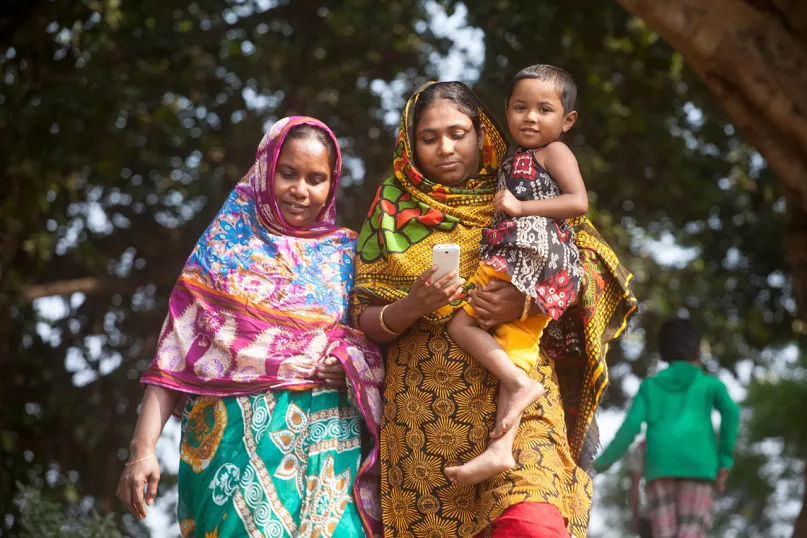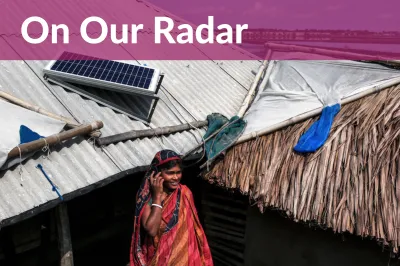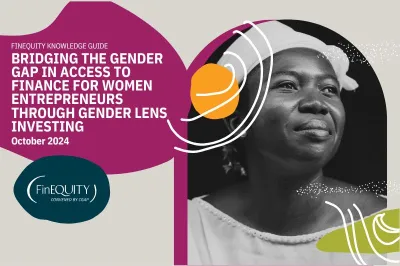5 Reasons for More Rigorous Qualitative Work on the Intersection of WEE and DFS

This blog post was originally publised on the BRACU website.
Women’s Economic Empowerment & Digital Financial Services
In September 2020, the WEE-DiFine initiative was launched with the publication of the Initiative’s white paper, which aimed to identify gaps in the study of the causal mechanisms between access to digital financial services (DFS) and women’s economic empowerment (WEE). The pathways through which DFS impact WEE are complex, often context-specific, and sometimes even occurring through reverse causality (i.e., an increase in WEE can lead to DFS adoption).
While there is a clear and immediate need for more rigorous evaluations on the impact of DFS and WEE, this post presents five reasons — and five ways — to utilize qualitative work to explore this subject area. Alloatti (2020) argues that the subjective measurement of WEE, using qualitative methodologies, should not be compared to quantitative methods, in part because there is much to gain, including context-specific learnings, from qualitative research. Therefore, I don’t take a comparative approach. Rather, the post highlights the added value to the field of using qualitative work either alongside quantitative research or independent of such work.
#1 To Understand Context Through Formative Work
J-PAL’s guide to measuring women’s and girls’ empowerment is a must-read for anyone interested in WEE. Glennerster, Walsh, and Diaz-Martin outline four steps to measuring WEE in impact evaluations. Their first recommended step is to conduct formative research to understand the context at hand, as empowerment and gender dynamics look different in different places. Focus group discussions (FGDs), interviews, or direct observations are three typical research methods used in formative research. They state, “Good formative research creates repeated opportunities to listen to people living in the communities in which we are working.” In order to adequately measure empowerment, which is a process by which change takes place, we must first understand what changes we seek to be realized.
#2 To Adapt Existing Measures
FinEquity recently published a mapping of WEE measurement tools for researchers and practitioners in the financial inclusion sector. Even well-established WEE measures may need to be adapted to meet the needs of new studies. An excellent article by Laszlo et al. (2020) outlines direct and indirect measures of WEE in intrahousehold settings. The authors argue that the success of measuring WEE is dependent on the relationship between how the researchers conceive of empowerment, the measures they’ve selected, and the data they are able to collect. Included in FinEquity’s mapping are Ipsos’ WEE indicators which are intentionally flexible. Ipsos encourages researchers to adapt and test the indicators in communities of interest and local languages. Therefore, there is value in carefully selecting and adapting measures, as necessary, to new contexts and investigations.
#3 To unpack or contextualize quantitative findings
While measuring outcomes allows us to systematically gauge the effect of DFS on WEE, if the processes by which the effect is taking place are not clear, we need to further unpack those dynamics. Therefore, qualitative work alongside quantitative studies can be used to further unpack processes and dynamics. A recent example of qualitative research used alongside quantitative research can be found in Burke, Rabinovich, and Schaner's (2020) study on the relationship between financial services and women’s lives in Kenya. The research team coupled a quantitative analysis of secondary data with qualitative interviews, finding similar themes through both approaches. With that said, the qualitative data revealed that the quantitative data did not capture important outcomes such as a woman’s self-worth or self-efficacy — themes that emerged from the qualitative analysis that were not included in the quantitative data collection.
#4 To dig deeper
When dealing with complex questions, research teams should consider trying new tools and methodologies. Activity-oriented questions in FGDs may elicit deeper insights than traditional interview methods. These can include decision trees, picture pile sorting, and role-playing, to name a few. While these activities require advanced planning and well-trained moderators, success from public health provides evidence that these approaches can improve interviewing in low-income settings “by encouraging respondents to reflect on their behaviour and by provoking gut reactions that uncover hidden reasons for behaviours and reduce social desirability bias.” The authors conclude that utilizing activities like these in FGDs can increase engagement among participants and yield richer data.
#5 To Build New Measures
Although there is no shortage, per se, of measures of access to DFS, WEE, or digital literacy, as we further hone in on the pathways between access to DFS and the outcome of WEE, we may need to conceptualize some mechanisms differently. For example, Garz et al. (2020) call for improvements in the measurement of bargaining power as well as new measures aimed at capturing the effects of DFS at the household level. Qualitative research, using interviews and FGDs, can be used to determine what “everyday language” people use, which can be incorporated into new measures. FGDs can also be used to test new measures before they are fielded to a larger sample.
While I argue that there are a host of reasons to utilize qualitative research to explore the intersection of WEE and DFS, I also support maintaining rigour, including skilled qualitative researchers, and mobilizing qualitative research findings to further build the evidence base. When in doubt, consult an expert.
Jenna Grzeslo is the Program Manager for Research & Learning at BRAC USA where she supports the WEE-DiFine initiative – an initiative devoted to funding rigorous research on the intersection of WEE and DFS.


